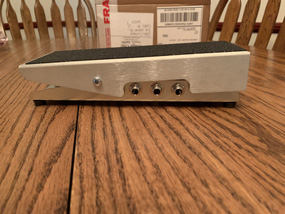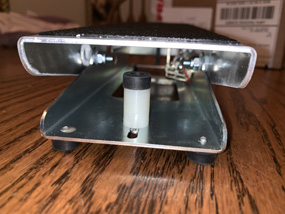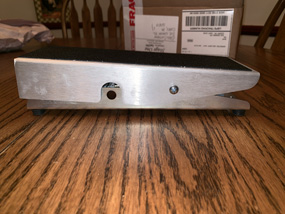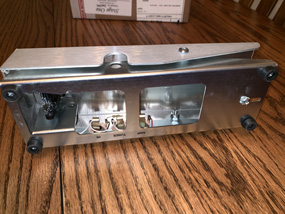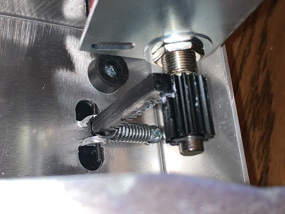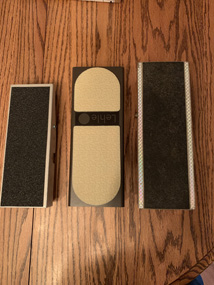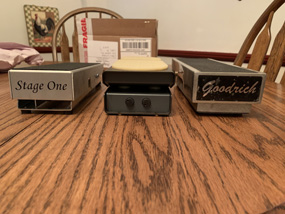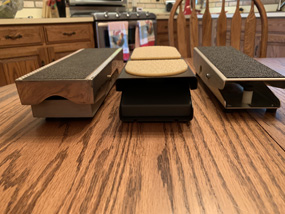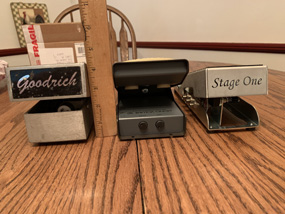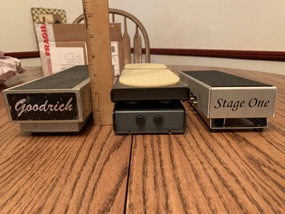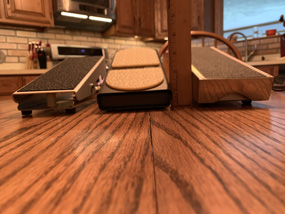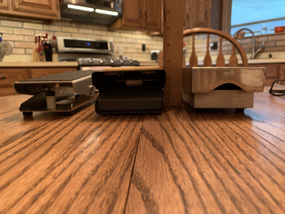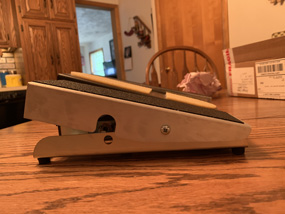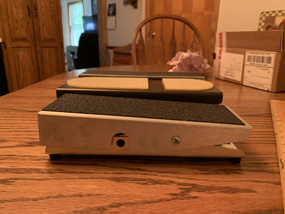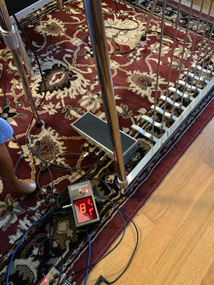Stage One Foot Volume Review
|
Here's my review of the Stage One volume pedal. This is a potentiometer pedal with a no nonsense straightforward gear driven design. It sells for around $100 plus $10 shipping (see manufacturer's link below). This pedal uses a high quality Dunlop (CTS) potentiometer with a conductive plastic track. No carbon track or element to wear out! This is the newer version of this pot as well that uses easy to solder tab terminals. This is a 470K pot (mine measures 458K). The pot rotation is about 310 degrees and the pedal uses about 260 degrees of this rotation allow the volume to go from audibly fully off to full on. A direct tuner out jack is provided and buffered by a resistor so you can leave an electronic tuner connected full time and tune with with the volume fully off. Although this is a lower cost volume pedal it uses not only the top quality Dunlop pot but Switchcraft jacks. You can check out more construction details in the photos below. One big advantage of this pedal is the low weight. It comes in at about 2 pounds under the weight of most volume pedals. Pedal Weights:
Useful links: Stage One volume pedal manufacturer link Telonics FP-100 volume pedal review Goodrich LDR2 volume pedal review Goodrich Model 120 volume pedal with Dunl;op HotPotz
|
|
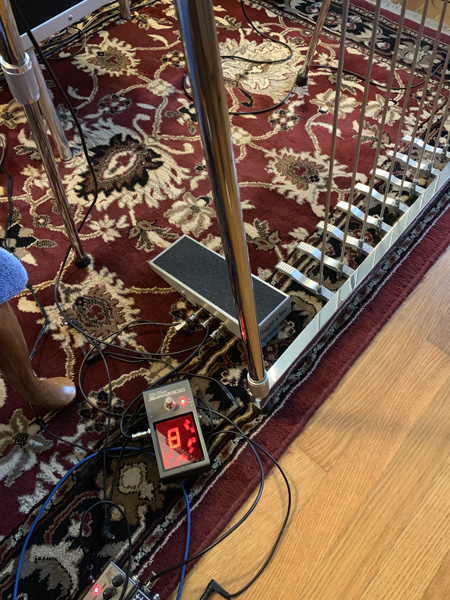
|

